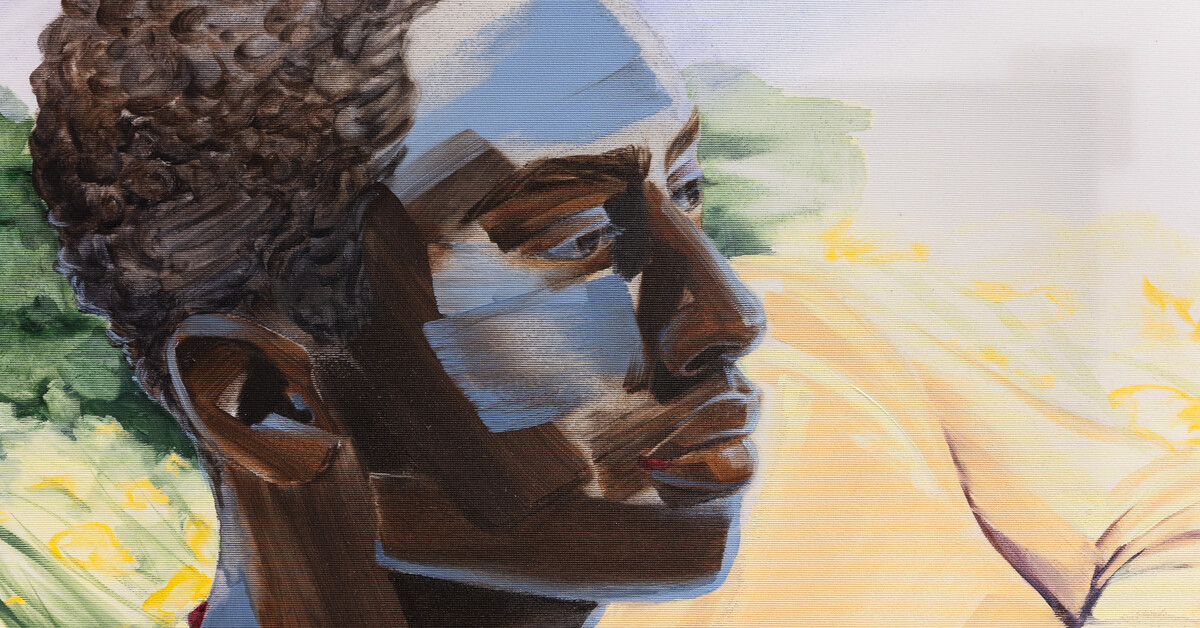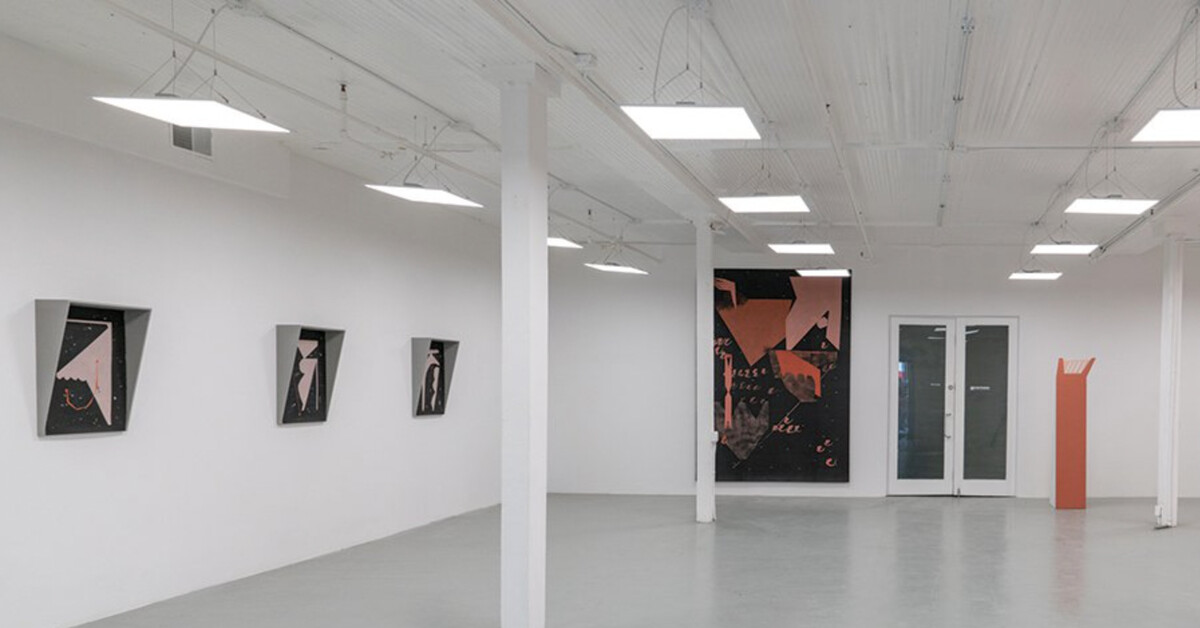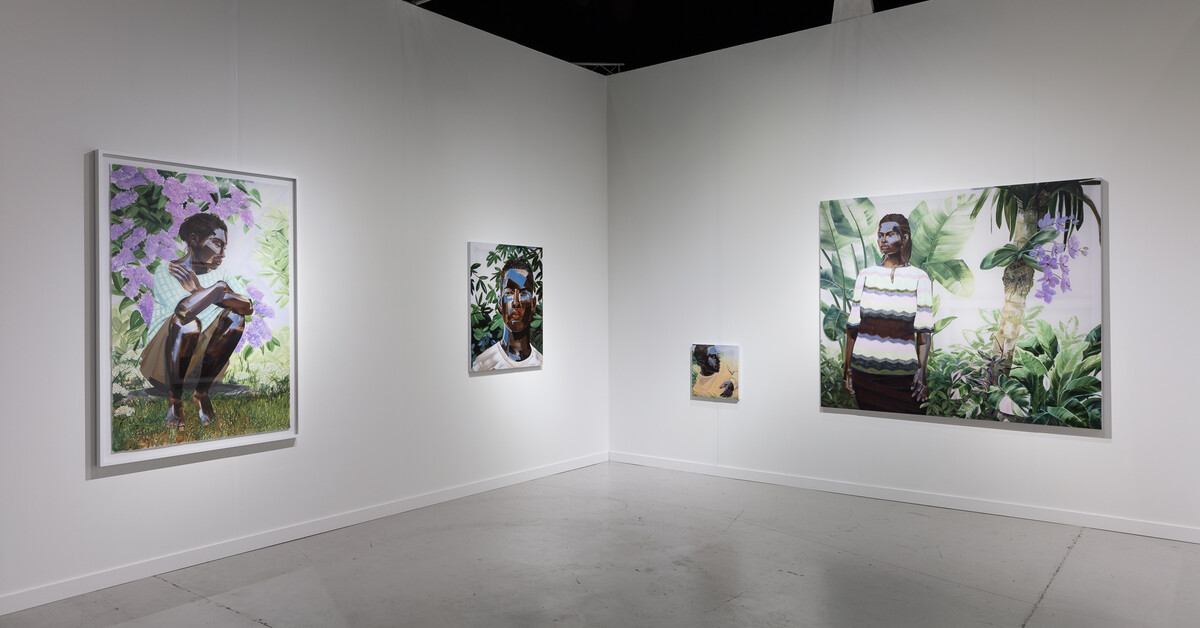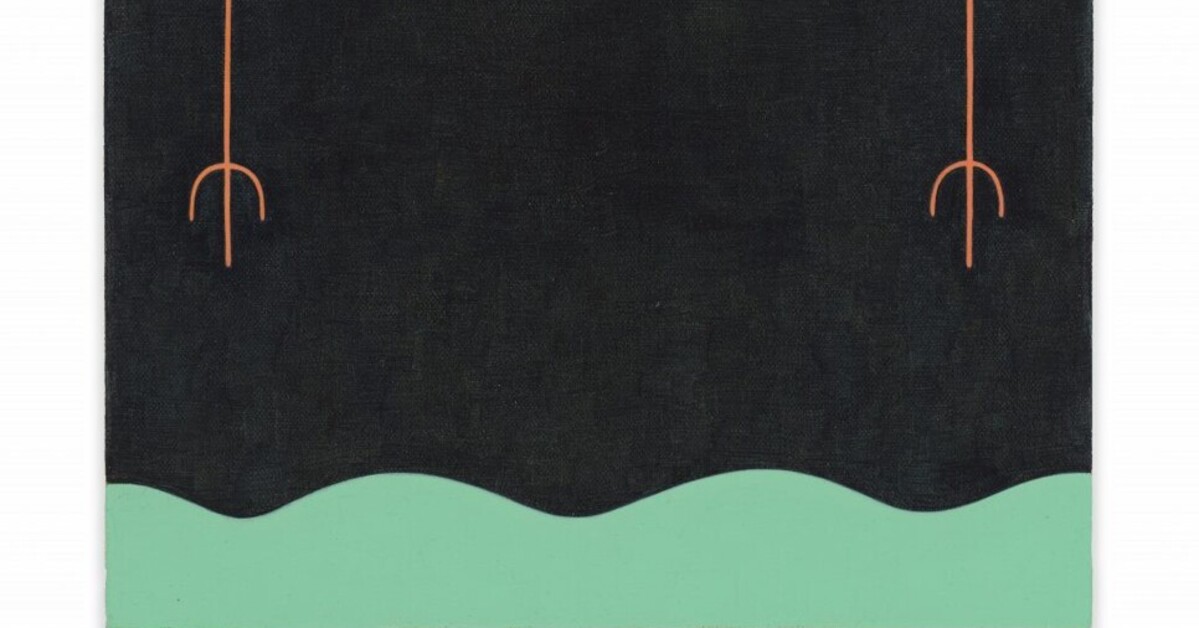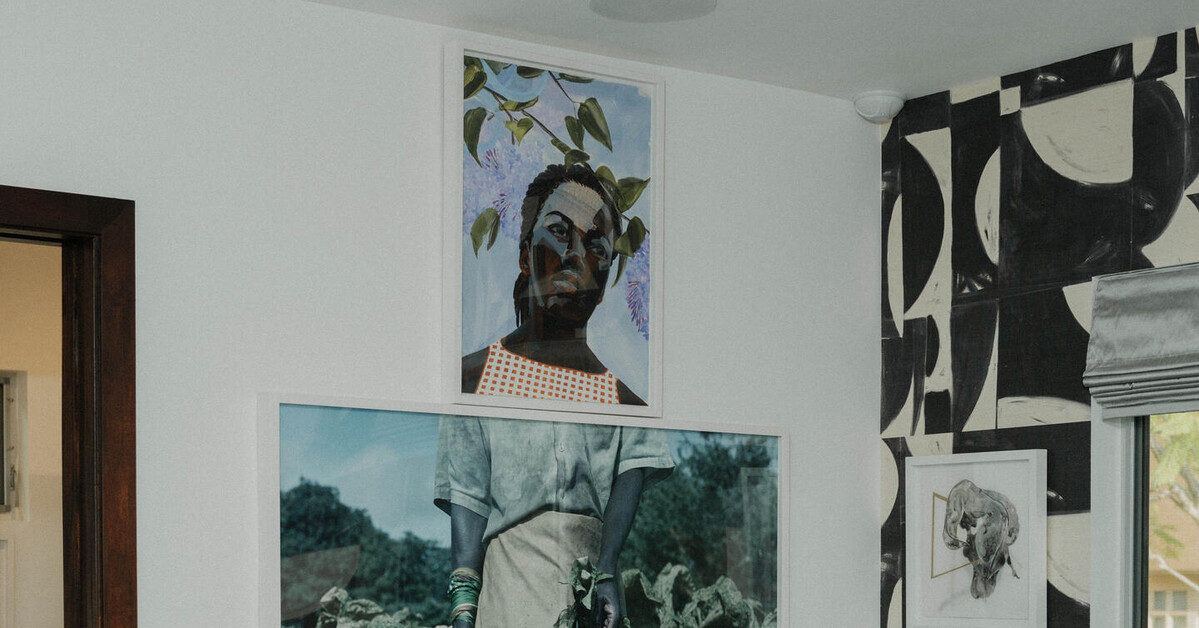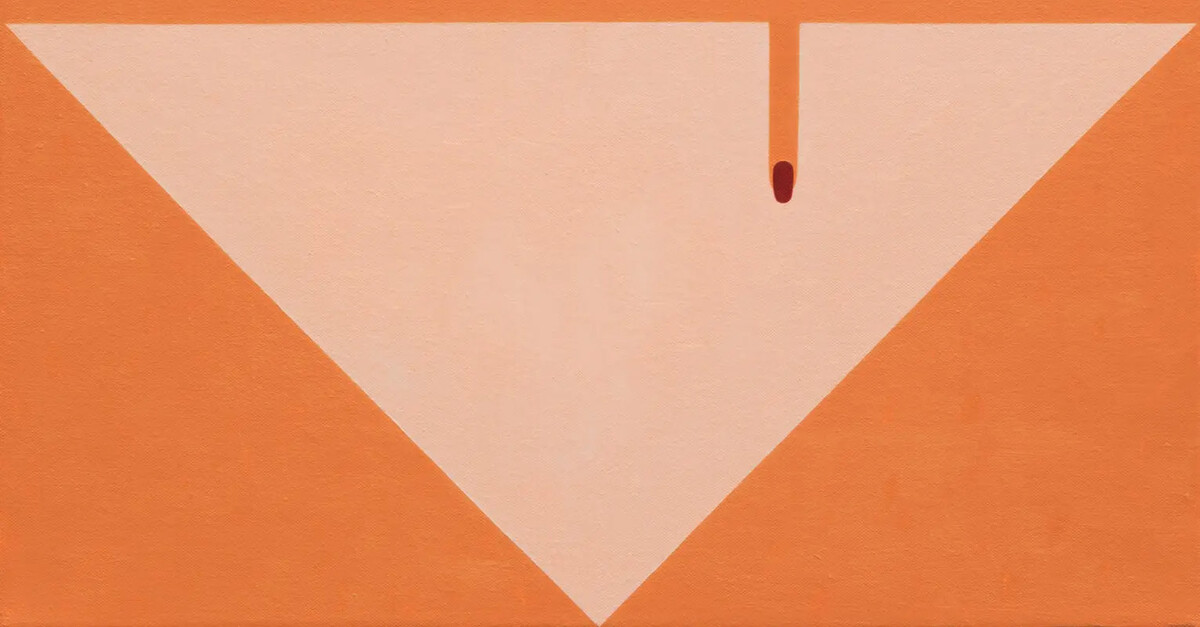Excavated Images: A Review of “Life Against Itself” at Patron
Newcity Art / Mar 3, 2023 / by Curtis Anthony Bozif / Go to Original
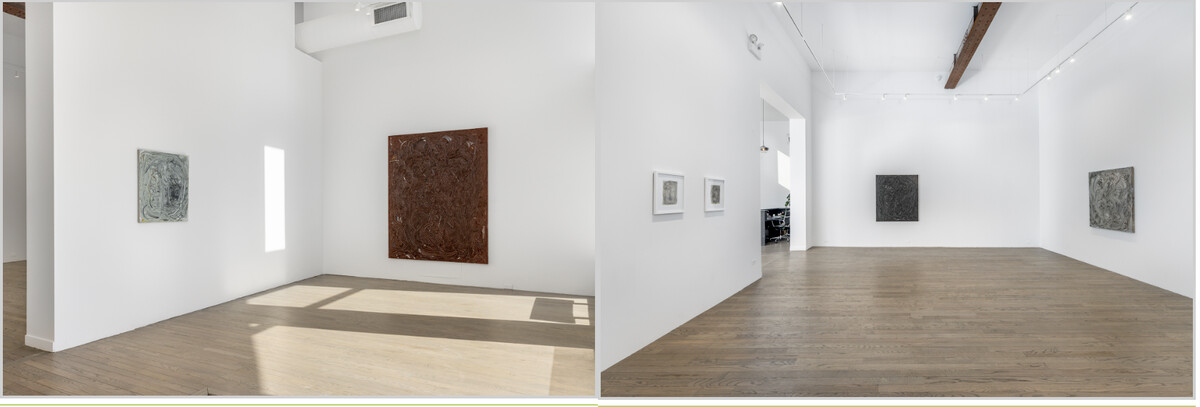
Installation view, Liat Yossifor’s “Life Against Itself” at PATRON/Courtesy: the artist and PATRON
I wonder why more artists don’t paint with their hands. Instead of a brush, employ fingers. In lieu of a knife or a squeegee, the palm, the edge of the hand. What could be more immediate, more direct? It’s the first thing one notices about the paintings in “Life Against Itself,” Liat Yossifor’s third solo show at Patron. For the better part of a decade, the L.A.-based artist has used a variety of bladed tools to make her signature alla prima monochromatic gestural abstractions. In the last year, however, the hand has cut off the knife.
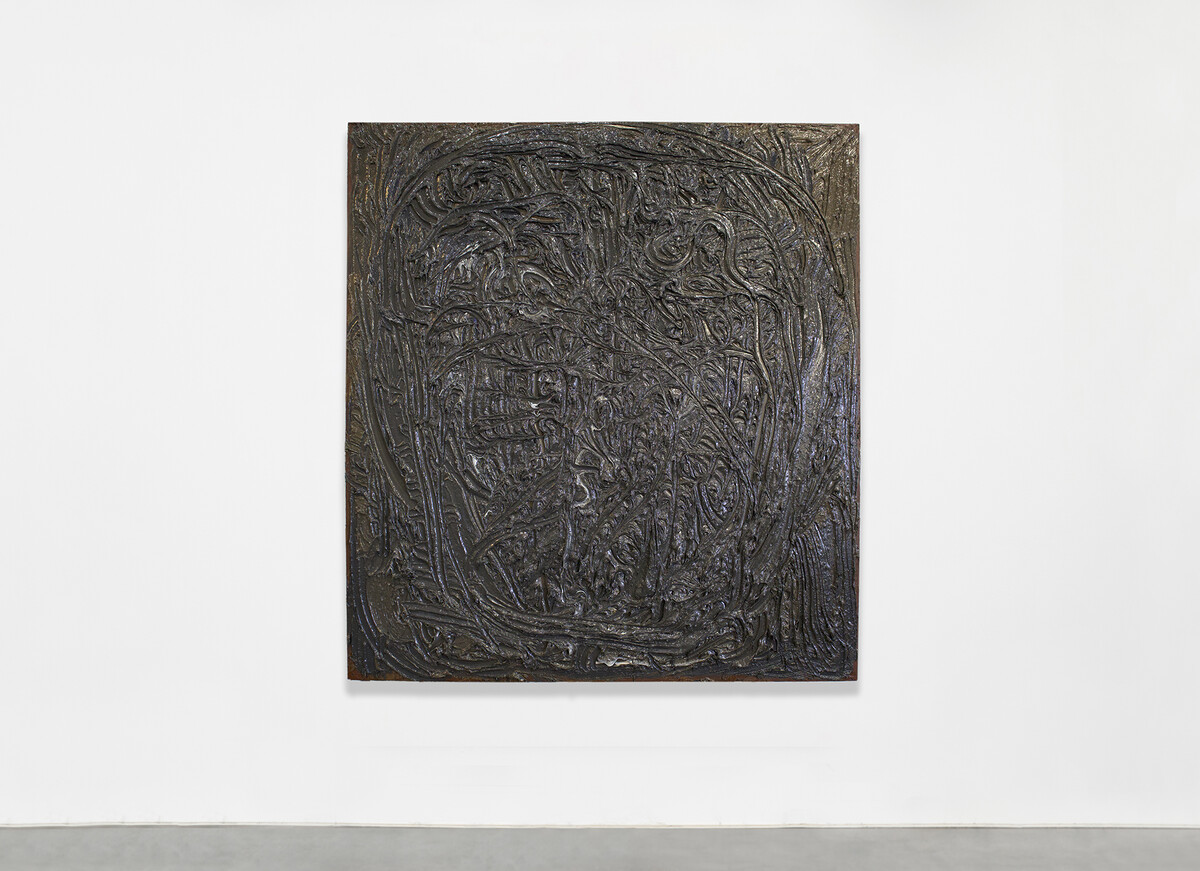
Liat Yossifor, “Double Head,” 2023. Oil on linen, 55 × 50 inches/Courtesy: the artist and PATRON
Plowing her fingers through a thick mix of linseed oil and pigment sourced from a boutique paint maker, Yossifor creates deep furrows. She describes the process as digging. Eyes travel easily over the well-worn tracks of her hands. Layered, sometimes swirling motions that, despite their dense materiality, recall eddies in a stream or weather systems over the Earth. The raw umber of “Double Head” has been roiled so thoroughly it resembles an ancient lava field. But these textures are not the result of geologic forces. Rather, I get the impression that someone is trying to communicate with me. A feeling that, though not rare, is not entirely common to contemporary art, either. A better analogy would be a pictographic language carved into rock weathered into obscurity. A message from a different place and time. Indecipherable. Yossifor’s color palette too: marble, red ochre, basalt, bring to mind Paleolithic cave art and stone relief sculptures from antiquity or pre-Columbian civilizations and lend the paintings a museumy weight. In contrast are three framed washes on paper. Made from silty turpentine, they seem weightless and immaterial next to the more substantial paintings.

Liat Yossifor, “Life Against Itself,” 2022. Oil on linen, 82 × 80 inches/Courtesy: the artist and PATRON
On a physical level, I’m surprised how affecting the paintings are. The more they look as if they were made by someone feeling around in the dark for something lost in the earth, the deeper my fascination. In a world of chatbots, deepfakes and virtual reality, they appeal to something more fundamental. But, spend some time with them, and gradually, marks coalesce, forms take on meaning and pictures emerge. In “Life Against Itself,” the deepest furrows suggest a cross-like, tree-like form—or is it a pair of eyes, ears, a nose, and a mouth? Once you see the wiggly figure with a loop for a head in “Figure Inside a Face” you can’t unsee it. It’s all you see. “Cuts,” “Tree” and “Clay” similarly appear to contain hidden figures. Last marks that, after untold hours, frustratingly, seem to foreclose deeper interpretations. The rich ambiguity of the rough-hewn surfaces fades behind vague signifiers for the human body, leaving me confused and wondering, was all that digging worth it?

Detail, Liat Yossifor, “Life Against Itself,” 2022. Oil on linen, 82 × 80 inches/Courtesy: the artist and PATRON
Janus is the two-faced Roman deity associated with destiny, time and war. His faces turned in opposite directions, they represent both past and future. Adorning gates and doors, Janus is the patron of thresholds everywhere and the beginning and ending of all things. Two-headedness, being of two minds, split personalities, dualities, being in two places at once, are important themes to Yossifor. These themes are translated to the paintings in their titles; compositionally, by their occasional bifurcation; in the layering of images and in the questions they pose: are these paintings or sculptures or something in between? How do we reconcile the process with the picture-making? Where does the ground end and the figure start? And, if we consider the artist in relation to both, how do we triangulate all three?
Fittingly, I find myself torn. Much of the power of these paintings comes from the intensity of Yossifor’s furrowing and raking, the repetition, the sheer volume of marks and their viscous materiality. Standing in front of them, it’s easy to imagine ourselves in her place at the scene of creation, molding the paint like clay in our own hands. Might this image be figure enough? Because what’s truly compelling about the work is the excavation, not what is unearthed.
Liat Yossifor’s “Life Against Itself” is on view at Patron, 1612 West Chicago, through March 25.

